Muck Diving Photography
As far as names go, “muck diving” might not have the greatest appeal. But seasoned macro underwater photographers know that mucky environments often hold the best, consistent opportunity to make images of rare and exotic critters. With a little extra dive and photographic technique, you can capture stunning images out of what may appear to be a desolate dive environment.
What Is Muck Diving?
Muck diving is exactly what it sounds like: exploring seemingly barren environments where the majority of the sea floor is muddy sediment. If you’re expecting bright coral reefs or wide-angle subjects, you’ll be disappointed. In addition to a mucky, or barren sandy sea floor, muck dives are often punctuated with dead coral skeletons, rubble, and man-made trash.
The appeal of this style of diving, especially for underwater photographers, is the proliferation of rare macro critters hidden in the muck, rubble and trash. Many of the world’s best muck dives feature subjects that simply cannot be found on a consistent basis anywhere else.
In the midst of rubble and muck, you can find and photograph incredibly colorful subjects, like this flamboyant cuttlefish
Where to Muck Dive
There’s muck diving in a variety of destinations. Many of the more popular muck diving destinations can be found in Southeast Asia. Lembeh Strait, in Indonesia, is considered the world’s “muck diving capital,” with the greatest diversity and number of prized critters. However, other notable muck destinations can be found in almost any ocean. Here are a few popular spots:
- Blue Heron Bridge, Florida
- Lembeh Strait, Indonesia
- Anilao, Philippines
- Tulamben, Bali, Indonesia
- Milne Bay, Papua New Guinea
While pygmy seahorses can be found throughout the Indo-Pacific, muck dives often provide a plethora of subjects—up to a dozen per sea fan
Equipment for Muck Diving Photography
Without question, the stars of muck diving are all macro critters. For this reason, a good go-to setup for DSLR users is a 55/60mm macro lens: Most muck critters aren’t terribly shy and using a lower focal length limits the amount of backscatter-ridden water between the subject and your camera. But just because the subjects are small (from the size of a peanut to the size of a softball), doesn’t mean a macro lens is a must. Shooting close-focus wide-angle with a fisheye lens in this environment can produce some amazing results, as well.
Using a longer focal length macro lens, such as the 100/105mm, can be effective for photographing more shy subjects, certain fish behavior, as well as super-macro photography. The longer focal length will aid in filling the frame even with subjects that refuse to let you approach closer than two feet. This is useful for subjects that are roughly the size of your fist down to less than an inch.
With more shy subjects, like this rare “wonderpus,” using a longer focal length can help fill the frame with the subject, without needing to get too close
Additional photo equipment for muck diving includes super-macro diopters. Such diopters are especially useful when shooting with longer focal length macro lenses, as they can significantly decrease the working distance to a subject. Also consider adding a snoot to your arsenal, which helps selectively light the creature while leaving the surrounding muck dark.
Snooting is a popular technique for spotlighting a subject amidst an endless expanse of distracting sand and muck
Dive Equipment for Muck Diving
One key piece of dive equipment for a muck dive is the aptly named “muck stick.” Essentially a 12-inch-long metal pole, the muck stick can be used to point out hard-to-see creatures. Specific to photography, a muck stick can be used to help support a large camera rig. You can plant the pointer tip of the stick into the sand or rock, and use it as a monopod to stabilize the camera, or even perform focus bracketing. The stick is also useful to bang against a tank to get your buddy’s attention. Note: A muck stick should never touch live coral or critter for any reason.
While no other special dive equipment is required for muck photography, it is important to keep your trim in tact—no dangling regulators or split/soft fins that could kick up sand. Also, consider mounting weights in the back of your tank and on your ankles (if needed) to keep you horizontal in the muck.
Maintaining good buoyancy by being weighted properly and using proper breathing techniques improves the quality of encounters with muck subjects
Muck Photography Subjects
The subjects that you’ll find on a muck dive are not like any others you might encounter in a traditional environment. The selection of subjects is also highly dependent on the specific location of the dive. Having said that, the real benefit to muck diving photography is the regularity with which otherwise rare creatures can be encountered.
Coleman’s shrimp make a home amongst the pointy spines of a fire urchin. Such great photo opportunities are rare in other environments
It is impossible to name all of the specific critters you may find on any given muck dive—even in a single location. However, the following is a solid list, organized by subject type:
- Shrimp: Mantis shrimp, Coleman shrimp, harlequin shrimp, wire coral shrimp, tiger shrimp
- Crabs: Boxer crab, zebra crab, orangutan crab, soft coral crab, squat lobster
- Cephalopods: Bobtail squid, pygmy cuttlefish, flamboyant cuttlefish, mimic octopus, coconut octopus, blue-ringed octopus
- Frogfish: Hairy frogfish, painted frogfish, warty frogfish, giant frogfish
- Eels: Snake eel, ribbon eel, garden eel, crocodile eel
- Bottom-Dwellers: Stargazers, fingered dragonet, leaf fish, crocodile fish, stonefish, scorpionfish
- Pipefish: Robust ghost pipefish, coral banded pipefish, ornate ghost pipefish
- Seahorses: Pygmy seahorses (all species), yellow seahorse, common seahorse, pipehorse
- Others: Harlequin sweetlips (juvenile), batfish, lionfish (juvenile), mandarin fish, cardinal fish, jawfish
In addition to the myriad of living subjects, muck diving also presents the opportunity to photograph the unique dwellings of many critters as secondary subjects. For example, the coconut octopus can be found hiding in coconuts, large seashells and man-made trash. A popular hiding place for smaller critters is inside cola bottles or beer cans.
Sometimes, the trash and muck can be its own subject: Here a tiny blenny hides inside the tip of a former tube of toothpaste
Muck Photography Techniques
Taking a decent muck photo isn’t all that hard. The subjects pretty much stand still and wait for you to approach. But to take a great muck image, you’ll have to follow some basic tips. Whether you’re taking stills with a GoPro or with a professional-level DSLR, keeping these tips in mind will turn your images into muck gold.
Do Your Research: Researching the subjects you’re likely to encounter on a muck dive (or trip) can increase the quality of your photos. First, it will give you an idea of where to find subjects in a muck environment. For example, blennies and gobies often like to hang out in the mouth of a glass bottle. You can also research how other photographers have captured rare subjects to inspire your own photography.
With research, you can learn expected behaviors of prized critters. For example, two harlequin shrimp can most often be found munching down on a sea star
Good Buoyancy: Having good diving skills and buoyancy is key to coming home with good images. Most muck environments are either light sand or silt, which can easily turn good visibility to no visibility with a few careless fin kicks. If it’s your first muck dive (or your first in a long while) focus on being trim and neutrally buoyant in the water column. Your photo subjects (and fellow divers) will appreciate the courtesy.
Get Low: With the exception of a few sand-dwelling subjects (stargazers, crocodile fish, etc.), there’s no reason to be shooting straight down into the sand. Doing so will likely make the subject invisible in the final image (the real goal of millions of years of evolution). Instead, get as low as possible without disturbing the substrate below and frame the subject at a horizontal angle.
Instead of shooting down onto this stargazer, getting as low as possible provides a more dynamic composition
Pay Attention to Negative Space: The biggest challenge by far in muck dives is the negative space surrounding otherwise beautiful creatures. Sometimes you’ll get lucky and have a critter in front of a colorful anemone or interesting piece of trash (like bottles, shoes, even backpacks). But this is a rare situation. Instead, as mentioned above, get as low as possible, ideally so that the open water column appears in the top half of the image. Other techniques to improve negative space in muck photos can be found in the “Creative Muck Photography” section below.
Ideally, in muck diving photography, you want to get so low as to frame the subject in front of the open water column, as is the case with this longnose hawkfish. This task is made easier by photographing critters higher in the water column in coral and sea fans
Photograph Behavior: Almost anyone can take a profile image of a muck critter, but to make your images really stand out, try to look for interesting behavior. Again, this involves doing your research to know what to look for, and being patient when that moment arises. Photographers have waited countless hours to capture the yawn of a frogfish, the mating kiss of mandarinfish, or shrimp cleaning an eel. Ask your divemaster what behaviors are common in any given destination.
You can really separate your muck photography from the rest by being patient and focusing on nailing a behavior shot. You might have to wait an hour on a dusk dive to capture this mandarinfish mating ritual, but it’s worth it
Creative Muck Photography
Muck diving not only provides the opportunity to practice creative photography techniques, it demands it. While the subjects on a muck dive are beautiful, the surrounding environment is usually less so. We can limit how much this mucky environment distracts from our images using several techniques.
The primary creative technique is known as bokeh. Here, we use more open apertures (f/5.6–f/8) to decrease the depth of field. The goal is to blur out the boring muck background while leaving the face and eyes of the subject in clear focus.
Using shallow apertures is a great way to blur out undesirable parts of an image and draw attention to the foreground subject, in this case, the poisonous blue-ringed octopus
Perhaps the most popular, yet advanced, creative technique for creating compelling muck images is snooting. Essentially, a snoot is a tool that reduced the beam angle of your strobe, providing more control on how we selectively illuminate a given subject. For example, in a muck environment, using a snoot allows a photographer to light up a circle of sand surrounding a subject, while leaving the rest of the image black, or more dimly lit.
This effect spotlights the subjects and minimizes any detrimental impact of the mucky negative space on the viewer. A snoot can either be used with a macro setup or a close-focus wide-angle setup. Using a faster shutter speed will leave the non-snooted area darker or black. A slower shutter speed will make the effect subtler, by increasing the amount of ambient light from the negative space that reaches the camera sensor.
Using a snoot creates a spotlight effect on a subject, as if it’s stepped out onto a stage with a single light
You can also use snoots as a tool to backlight semi-translucent subjects, such as this common seahorse
Final Thoughts
Muck diving might seem a bore when compared to vibrant reefs or big animals, but for a critter connoisseur, there’s simply nothing better. And while taking decent muck images isn’t all that difficult, producing excellent imagery requires research, good diving skills, and a little creativity.
RELATED CONTENT
Featured Photographer
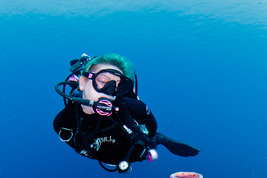
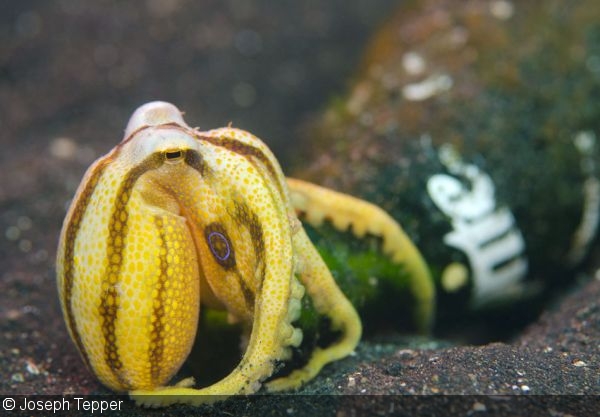

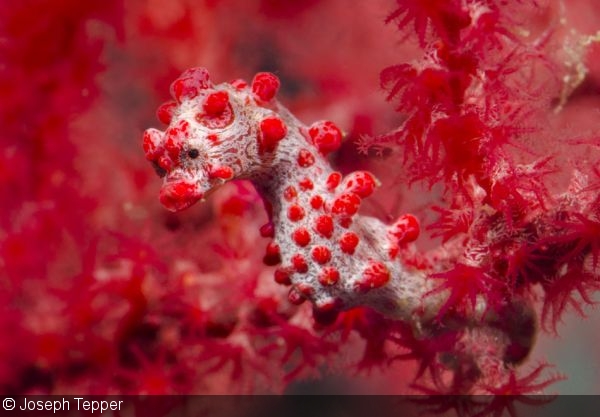

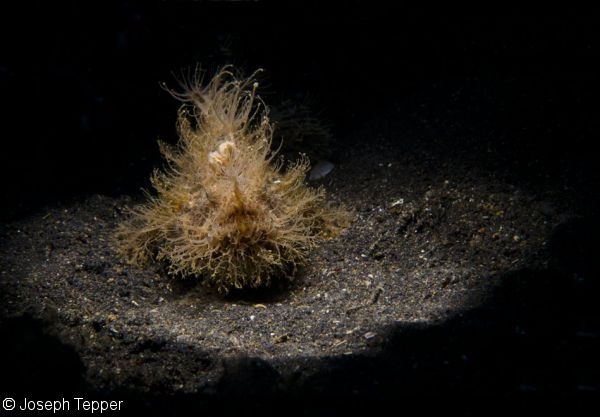
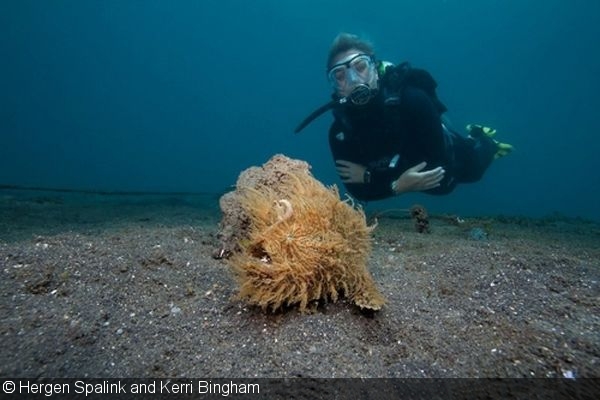
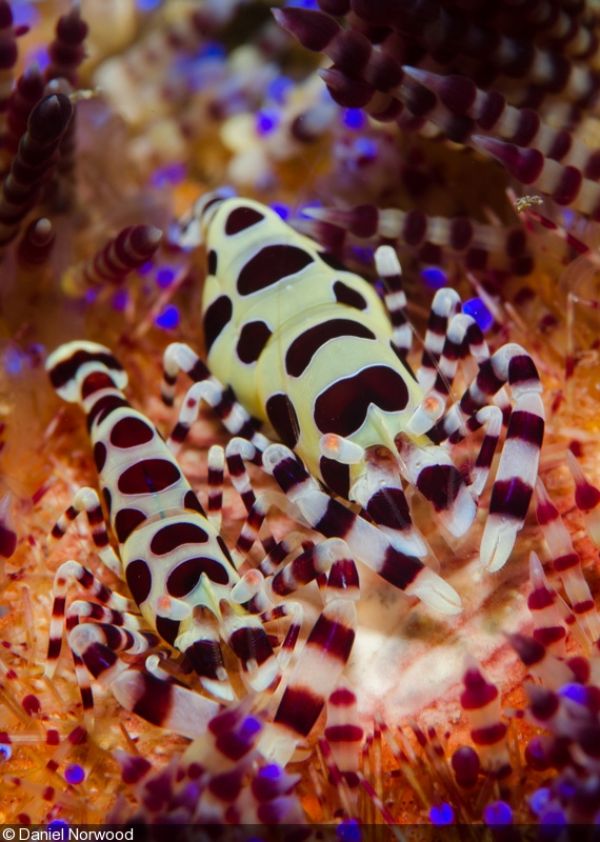
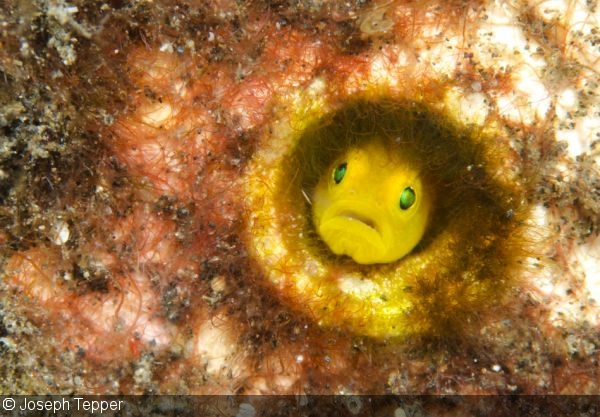
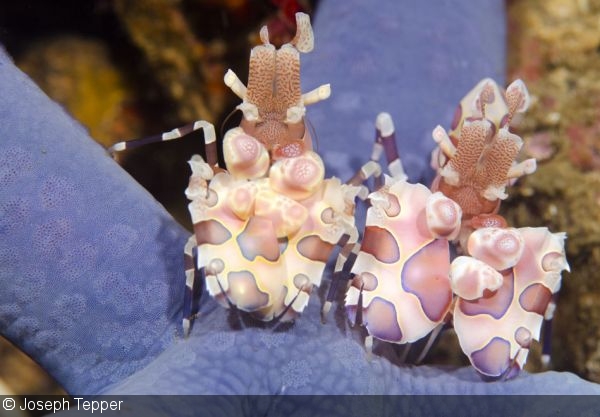
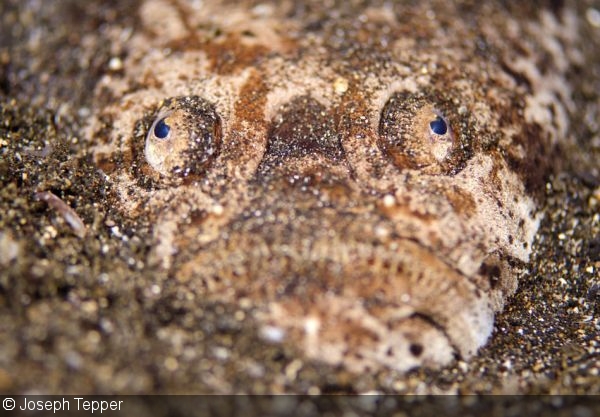
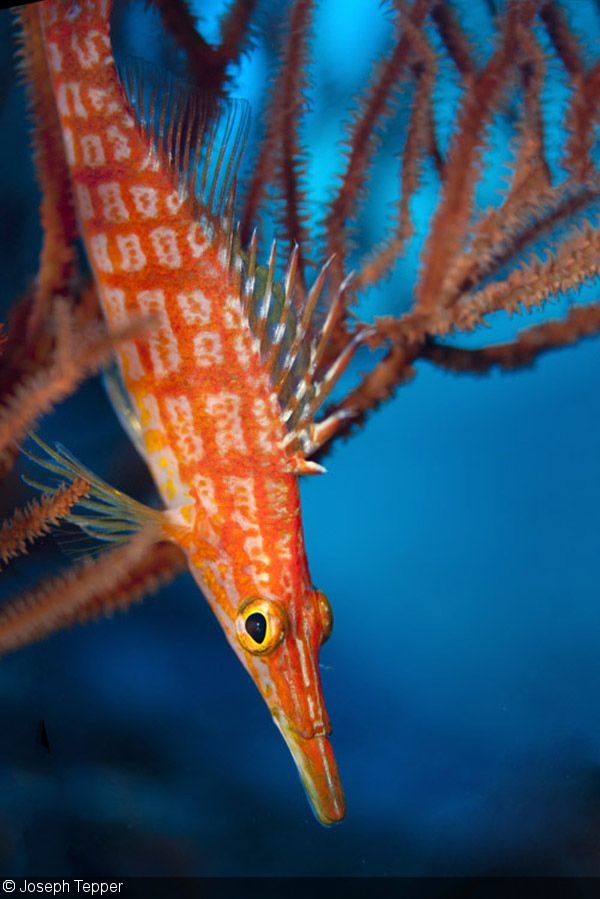

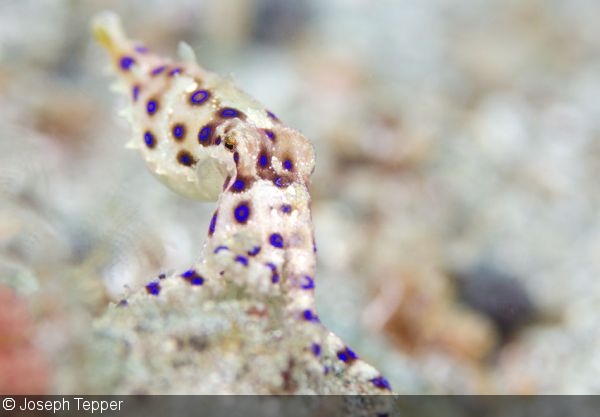
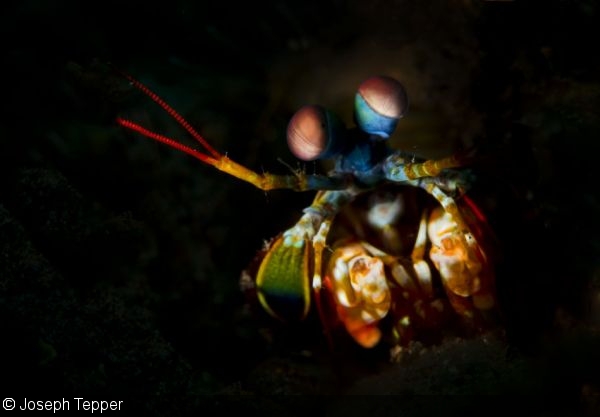
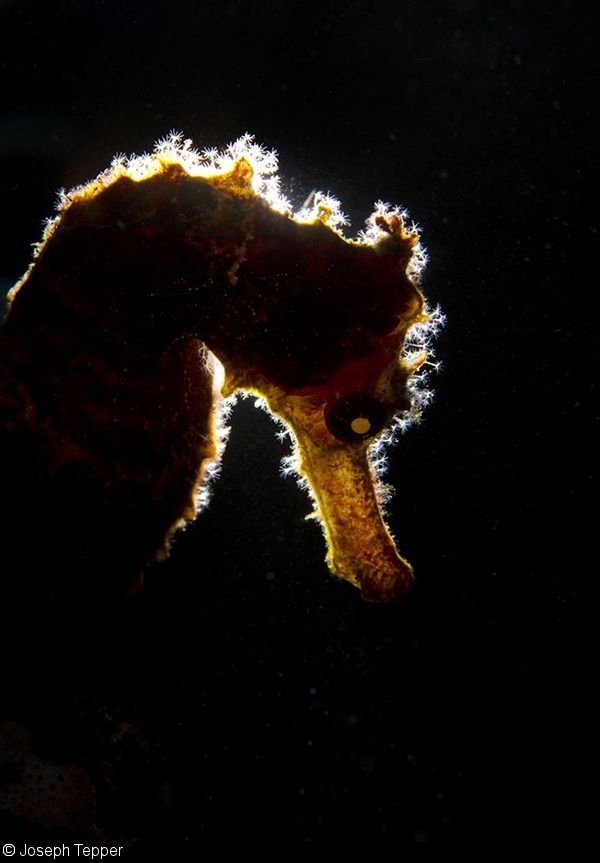
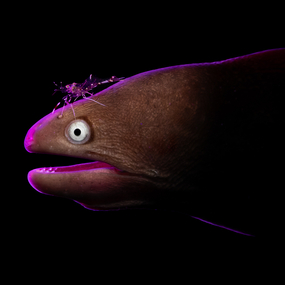
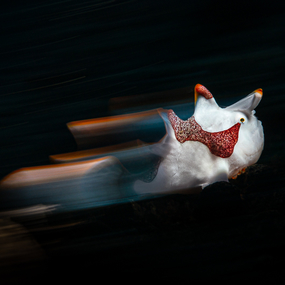
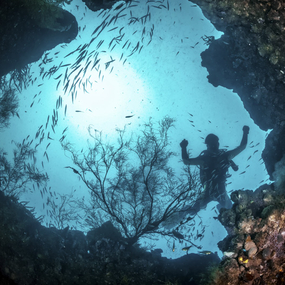
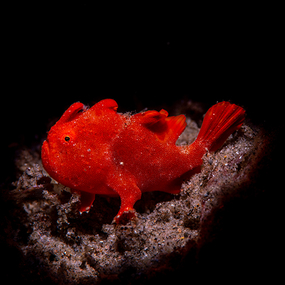
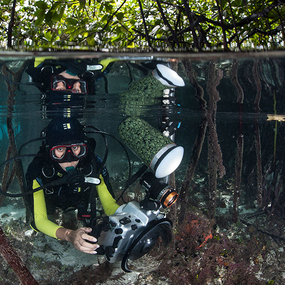
 Antarctica
Antarctica




